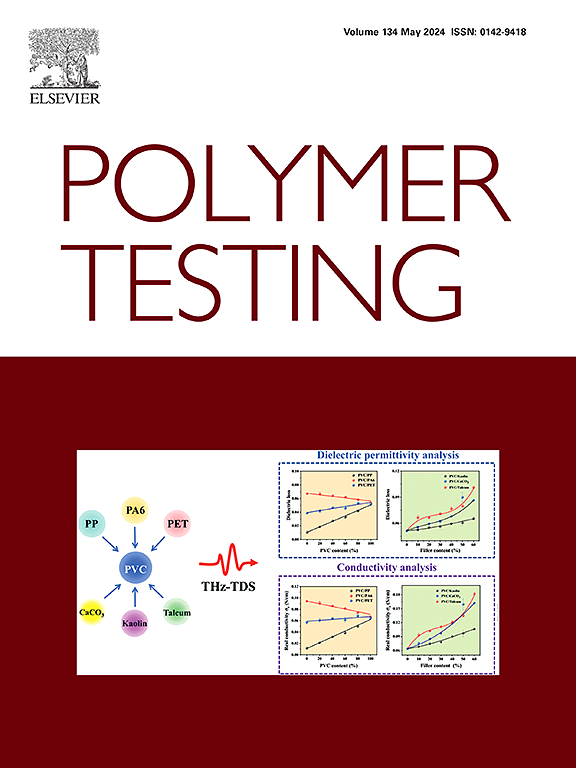Innovative polypropylene-based adsorbent functionalized by oxygen plasma and L-Arginine for efficient removal of emerging contaminants from aqueous media
IF 5
2区 材料科学
Q1 MATERIALS SCIENCE, CHARACTERIZATION & TESTING
引用次数: 0
Abstract
The existence of organic pollutants such as dyes and antibiotics in water poses serious health risks. The use of oxygen plasma to functionalize and apply oxygen containing functional groups onto surfaces can convert them to precious and useful adsorbents. In this work, functionalization of the inner layer of the disposable masks was performed via oxygen plasma treatment and the prepared catalyst applied for the removal of methylene blue and metronidazole from aqueous systems. Oxygen plasma treated masks (PTM) were identified via the contact angle measurement and the best sample was further functionalized with aminopropyl trimethoxysilane linked to L-Arginine. The synthesized PTM-APTMS-L-arginine composite was fully analyzed by various characterization techniques including XRD, BET, TGA, and FeSEM. The FTIR and EDS analysis showed that L-arginine is well distributed in a Polypropylene matrix. Moreover, the adsorption model was in good agreement with the Langmuir model with an adsorption capacity of 254 mg/g and 1006 mg/g for MNZ and MB respectively. Kinetics data were described well by pseudo-second-order for both pollutants. The results introduced the synthesized composite as a promising candidate for the water treatment process.

创新的聚丙烯基吸附剂,由氧等离子体和l -精氨酸功能化,可有效去除水中介质中的新污染物
水中染料、抗生素等有机污染物的存在对人体健康构成严重威胁。使用氧等离子体使职能化和应用表面含氧官能团上可以将其转换成宝贵的和有用的吸附剂。在这项工作中,通过氧等离子体处理对一次性面罩的内层进行了功能化,并将所制备的催化剂用于去除水体系中的亚甲基蓝和甲硝唑。通过接触角测定对氧等离子体处理膜(PTM)进行了鉴定,并用l -精氨酸连接的氨丙基三甲氧基硅烷进一步功能化了最佳样品。采用XRD、BET、TGA、FeSEM等表征技术对合成的ptm - aptms - l -精氨酸复合物进行了全面分析。红外光谱和能谱分析表明,l -精氨酸在聚丙烯基体中分布良好。吸附模型与Langmuir模型吻合较好,对MNZ和MB的吸附量分别为254 mg/g和1006 mg/g。两种污染物的动力学数据都可以用拟二阶方程很好地描述。结果表明,合成的复合材料在水处理工艺中具有良好的应用前景。
本文章由计算机程序翻译,如有差异,请以英文原文为准。
求助全文
约1分钟内获得全文
求助全文
来源期刊

Polymer Testing
工程技术-材料科学:表征与测试
CiteScore
10.70
自引率
5.90%
发文量
328
审稿时长
44 days
期刊介绍:
Polymer Testing focuses on the testing, analysis and characterization of polymer materials, including both synthetic and natural or biobased polymers. Novel testing methods and the testing of novel polymeric materials in bulk, solution and dispersion is covered. In addition, we welcome the submission of the testing of polymeric materials for a wide range of applications and industrial products as well as nanoscale characterization.
The scope includes but is not limited to the following main topics:
Novel testing methods and Chemical analysis
• mechanical, thermal, electrical, chemical, imaging, spectroscopy, scattering and rheology
Physical properties and behaviour of novel polymer systems
• nanoscale properties, morphology, transport properties
Degradation and recycling of polymeric materials when combined with novel testing or characterization methods
• degradation, biodegradation, ageing and fire retardancy
Modelling and Simulation work will be only considered when it is linked to new or previously published experimental results.
 求助内容:
求助内容: 应助结果提醒方式:
应助结果提醒方式:


